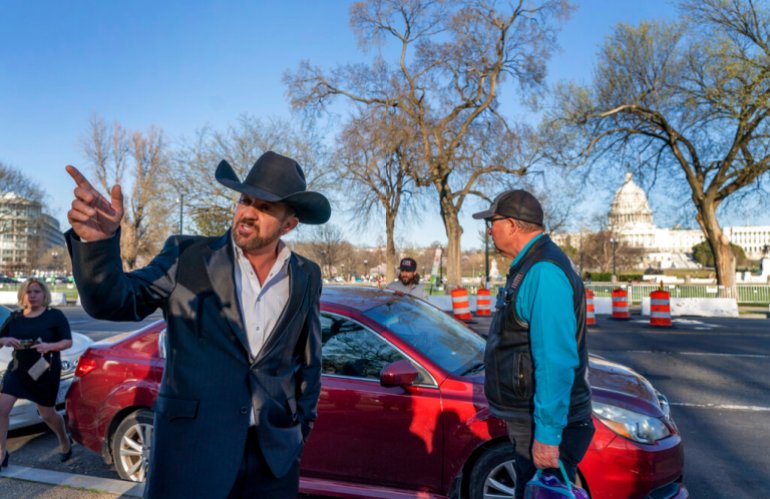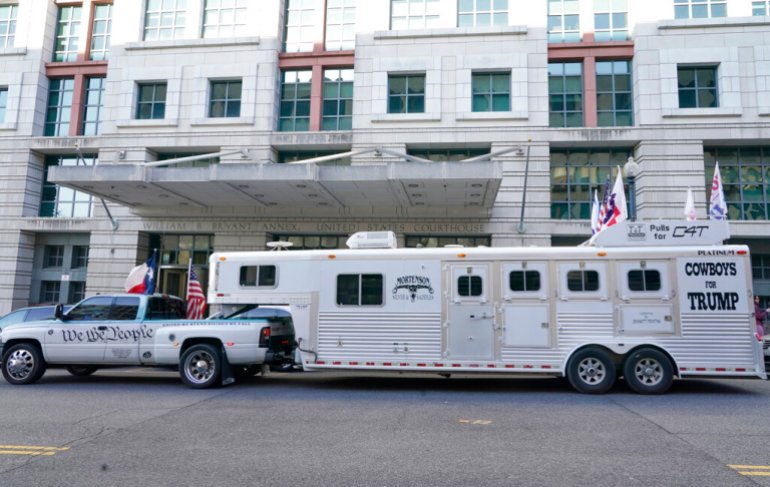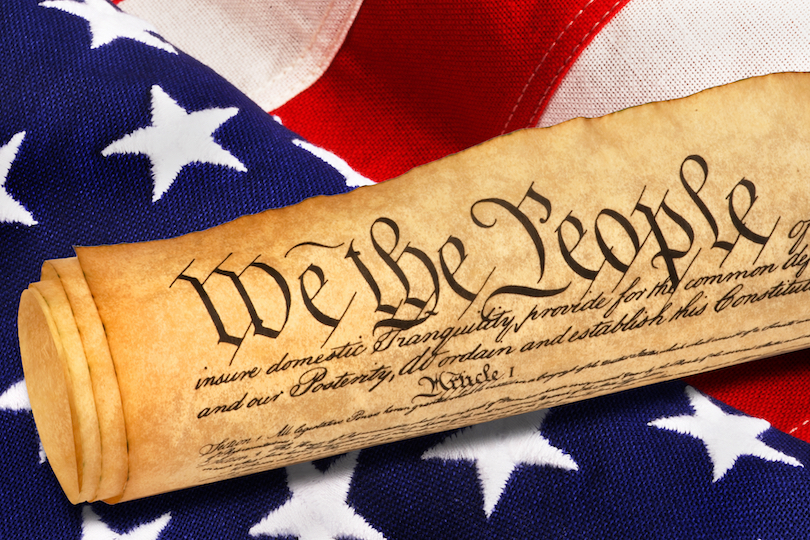[ad_1]
A judge in the United States has convicted an elected official from the state of New Mexico of illegally entering restricted US Capitol grounds, but acquitted him of engaging in disorderly conduct during the riot that disrupted Congress from certifying President Joe Biden’s election victory.
US District Court Judge Trevor McFadden heard one day of testimony without a jury before handing down a verdict on Tuesday to Otero County Commissioner Couy Griffin, 48, a former rodeo rider who helped found a group called “Cowboys for Trump”.
McFadden said there was ample evidence that Griffin knew he was in a restricted area and did not leave. Griffin crossed over three walls, needing help from others or a ladder to get over them, the judge noted.
“All of this would suggest to a normal person that perhaps you should not be entering the area,” McFadden said from the bench.
But the judge said prosecutors did not meet their burden to prove that Griffin engaged in disorderly conduct. “Arguably, he was trying to calm people down, not rile them up,” McFadden said.
Griffin’s trial in Washington, DC was the second among hundreds of pending federal cases arising from the siege of the US Capitol, during which a mob of former President Donald Trump’s supporters stormed the building.
Earlier this month, a jury convicted a Texas man, Guy Wesley Reffitt, of storming the Capitol with a holstered handgun, interfering with police and obstructing the joint session of Congress to certify the vote.
Griffin was charged with two misdemeanours: entering and remaining in a restricted building or grounds, and disorderly and disruptive conduct in a restricted building or grounds. Both carry maximum sentences of one-year imprisonment.
Griffin is scheduled to be sentenced on June 17. He was jailed for more than two weeks after his arrest on January 19, 2021.
The outcome of his trial could have a ripple effect, helping other Capitol riot defendants decide whether to let a judge or a jury decide their case. But the case against him is unlike most January 6 cases and may not be a bellwether for defendants who are charged with storming the Capitol.
That is because Griffin was not accused of entering the Capitol building itself or engaging in any violent or destructive behaviour.
Assistant US Attorney Janani Iyengar said Griffin climbed over metal bike racks, up a plywood ramp and shouted over the crowd about his belief that the election was stolen from Trump. “He was being extremely loud, climbing over barriers, engaging with the crowd,” she said in her closing arguments.

One of three members of the Otero County Commission in southern New Mexico, Griffin is among a handful of riot defendants who either held public office or ran for a government leadership post in the years prior to the attack.
His lawyers argued that he was selectively prosecuted for his political views.
Defence lawyer Nicholas Smith said the case against Griffin was “built on a series of false assumptions and premises” and argued that trial testimony showed Griffin went to the Capitol to support “free and fair elections”.
Smith said prosecutors apparently believed Griffin engaged in disorderly conduct by peacefully leading a prayer on the Capitol steps. “That is offensive and wrong,” Smith told the judge.
A key question in Griffin’s case was whether he entered a restricted area while Vice President Mike Pence was still present on Capitol grounds, a prerequisite for the US Secret Service to invoke access restrictions.
Griffin’s lawyers said in a court filing that Pence had already departed the restricted area before Griffin could have entered it, but Secret Service Inspector Lanelle Hawa testified that Pence never left the restricted area during the riot.

Hawa said agents took Pence from his office at the Capitol to a secure location at an underground loading dock on the Capitol complex. Pence remained in the loading dock location for four to five hours, until the joint session of Congress resumed on the night of January 6, Hawa testified.
Prosecutors did not give opening statements. Their first witness was Matthew Struck, who joined Griffin at the Capitol and served as his videographer. Struck reached an immunity deal with prosecutors for his testimony.
After attending Trump’s “Stop the Steal” rally on January 6, Griffin and Struck walked over barriers and up a staircase to enter a stage that was under construction on the Capitol’s lower west terrace for Biden’s inauguration, according to prosecutors.
Prosecutors played video clips that showed Griffin moving through the mob that formed outside the Capitol, where police used pepper spray to quell rioters.
“I love the smell of napalm in the air,” Griffin said in an apparent reference to a quote from the war movie Apocalypse Now.
After climbing over a stone wall and entering a restricted area outside the Capitol, Griffin said, “This is our house … we should all be armed.”
He called it “a great day for America” and added, “The people are showing that they have had enough,” prosecutors said.
In a court filing, prosecutors had called Griffin “an inflammatory provocateur and fabulist who engages in racist invective and propounds baseless conspiracy theories, including that Communist China stole the 2020 Presidential Election”.
[ad_2]
Source link














